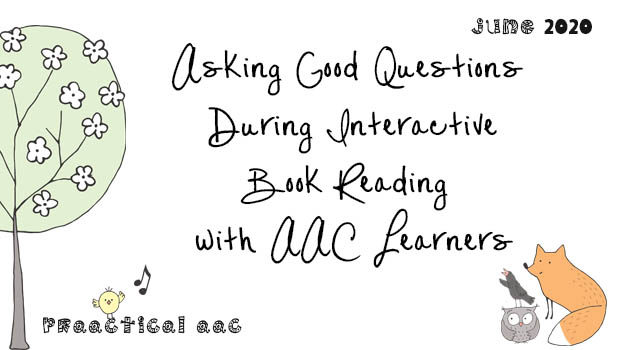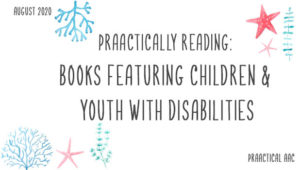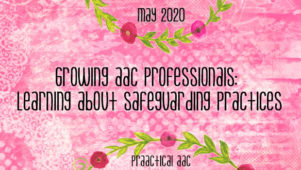Asking Good Questions During Interactive Book Reading with AAC Learners

Books are a terrific way to build language, and we often use shared reading to facilitate learning and provide practice in using specific skills. When we read, we go beyond the text in the book to comment on the narrative and illustrations (e.g., “Oh no! He fell out of the tree.” “This one is my favorite. I love his shiny scales”), and ask questions (e.g., “What happened to his pants?” “How does he feel?”). Interactive book reading helps to background knowledge, and connect things in the book to the learner’s own life experiences, among other things.
Asking questions is a big part of what we do in interactive book reading. Not only do they help us keep the learner engaged, but we also use them to model and provide practice on specific language targets. However, too many questions can cause learners to shut down, so we have to ensure that they don’t dominate the interaction.
Another thing to consider is the kinds of questions we ask. In general, we want to avoid questions about things that are self-evident. Having just read that Brown Bear saw a blue horse, we wouldn’t want to ask what the bear saw, for example, since both parties now know what animal it was. Asking about something we both know about would put a damper on the exchange, and sap the joy out of a shared reading experience.
So, what makes a ‘good’ question for language learning?
- Relevance: For the most part, stick to things that are relevant to what’s happening in the book and meaningful to the learner. If the learner points to a part of the illustration, for example, it indicates their interest and curiosity. That gives us an opportunity to make a comment (“Her face is all red.” “Oh no! It’s broken!”), pause to wait for the learner to contribute, and pose a question if they do not (e.g., “How does she feel?” “What will Ms. Frizzle think about that?”).
- Salience: Don’t pick an obscure detail to ask about. Unless color is an important part of the story line, minimize questions like ‘What color are his shoes?’ and ‘Where are the blue shoes?’ Unless color is an important aspect of the story, we wouldn’t want to draw attention away from the action to ask what color something is just because the AAC learner has those words in their AAC system.
- Purposeful: If we are reading the book as part of therapy or instruction, we should have specific goals. Jonah may be learning to use the core words ‘I’ and ‘can.’ Eleanor may be learning to protest and express negation. Jaxon may be learning to use ‘and’ to combine two shorter thoughts (e.g., “It is red. It is big.”) into one longer sentence (e.g., “It is big and red”). Our questions should be a good match for the specific skills that we’re trying to teach or practice through this activity.
- Repetition vs novelty: Another thing to consider is whether to ask the same question at several points throughout the book (e.g., “What happened?” “What’s inside?”) or formulate novel questions each time. This decision is based on the needs and priorities of the individual. Jonah needs a lot of practice with his two target words, I and can, so it makes sense that his teacher asks “Who can __?” at several points throughout the book. Jonah gets lots of practice answering “I can __,” which allows him to build fluency and gain confidence. Jaxon, on the other hand, has a goal that allows for more flexibility. His teacher may ask a variety of questions that allow him to respond with sentences that include the word ‘and’ (e.g., “Look at that big sandwich! What did he put on it?” “She took them all. What’s in her suitcase now?”). Deciding on whether to ask the same question over and over or a new question each time is, in part, related to the learner’s goals and need for predictability.
- Appropriate dosage: Asking the right kinds of questions is an important part of the instructional experience, but we also have to pay attention to how many questions we ask. If we ask too many questions, we risk turning a joyful reading experience into a chore or Q & A session. If we ask too few, we may not be able to provide sufficient practice opportunities.
When we are thoughtful about the kinds of questions we ask and how frequently we pose them, asking questions during book reading can be an instrumental part of the learning experience.
Do you have tips for infusing questions into book reading to create that ‘just-right’ teachable moment? We’d love to hear about them.
Filed under: Featured Posts, PrAACtical Thinking
Tagged With: Books, questions, reading
This post was written by Carole Zangari




